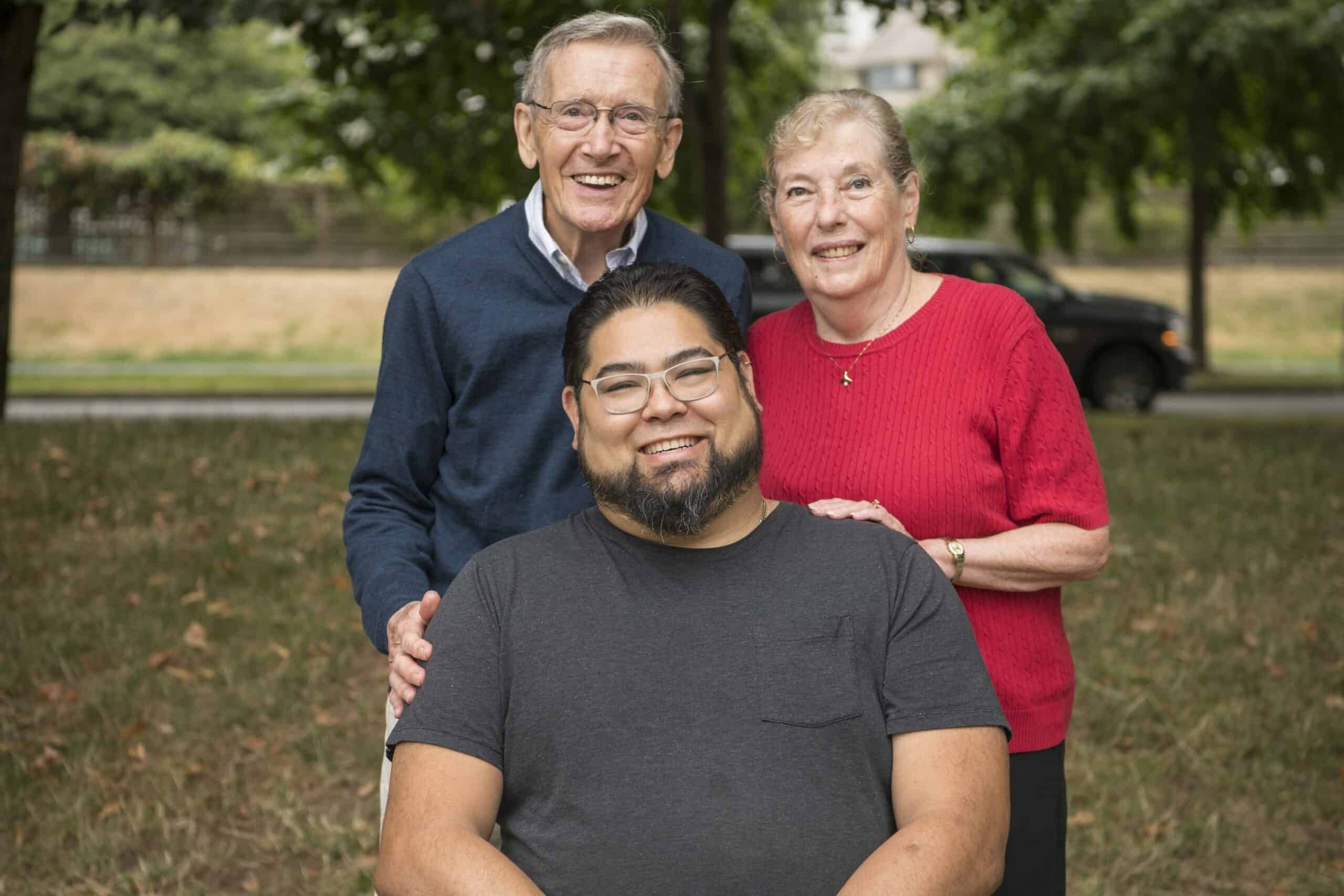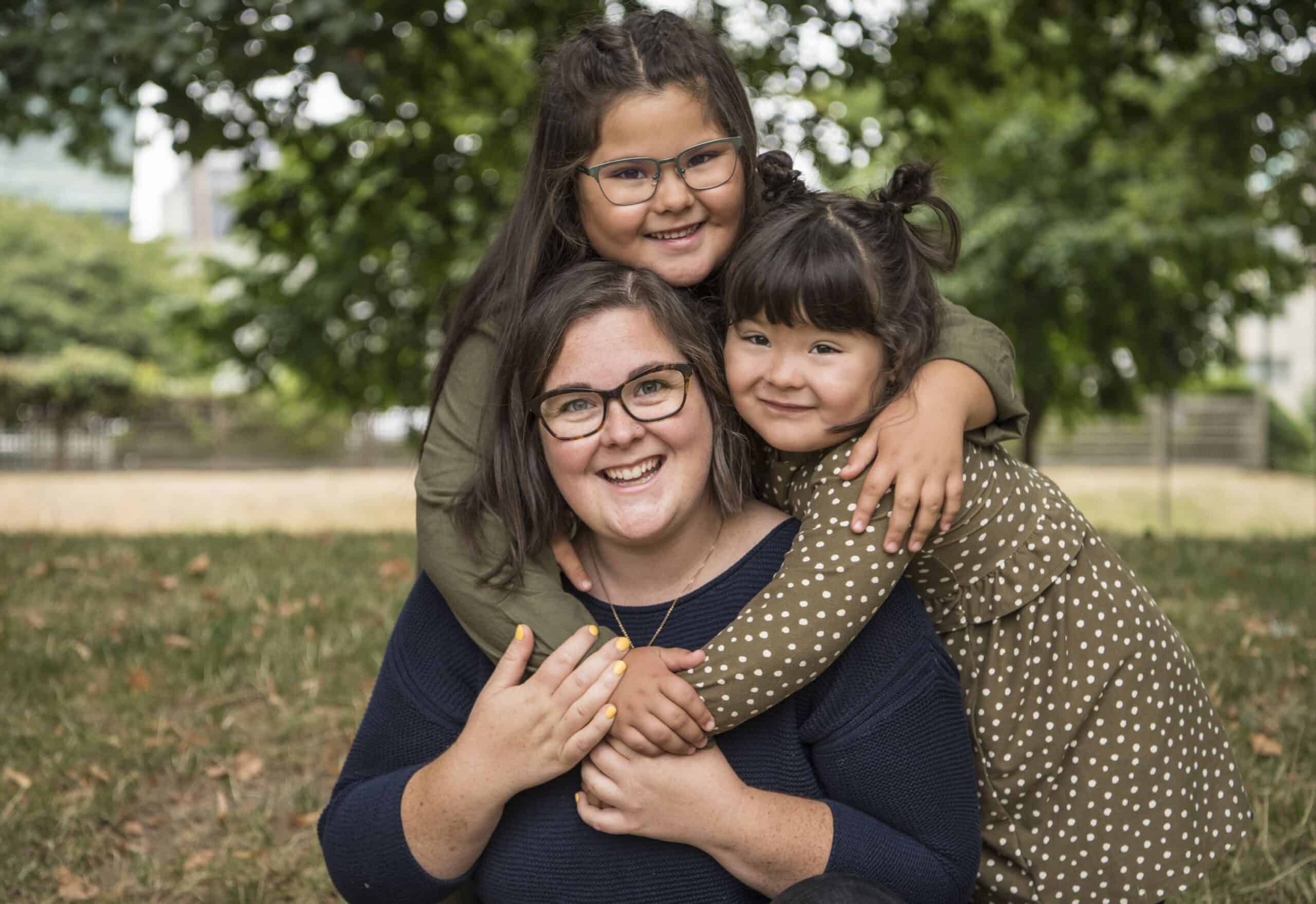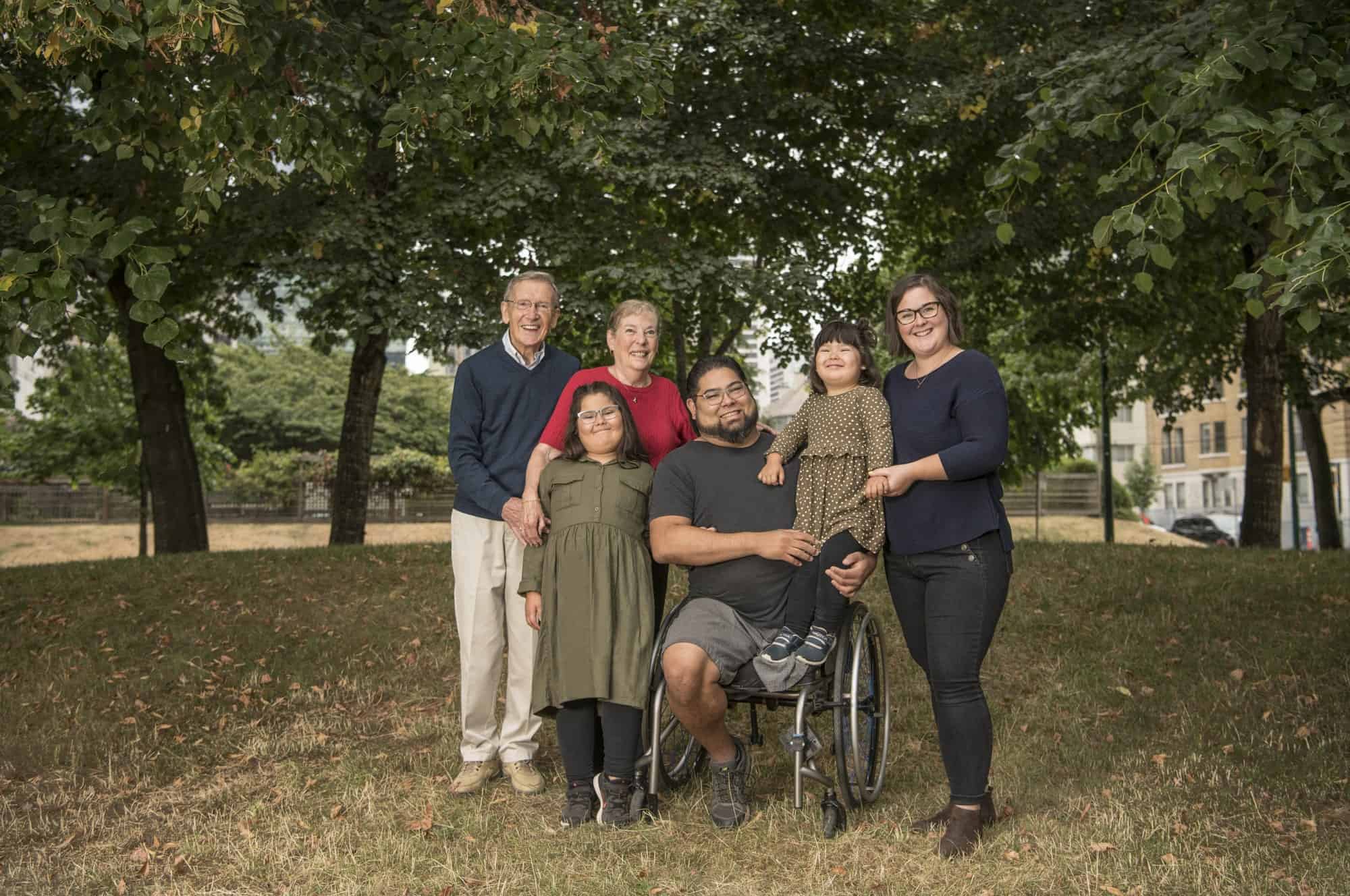From his living room window, Jamie Waterlow can look out and see St. Paul’s Hospital: where his daughters were born; where he receives ongoing care; where he spent six months on the precipice between life and death.
Jamie was an active college student who loved his job as a counsellor at YMCA camp in central BC. One day, while teasing some campers, he fell into some bushes and cut his leg just above the knee. A few days later, on a wilderness hike, he twisted that knee. The pain was so bad he had to be helicoptered out.
When he got back to Vancouver, he went straight to St. Paul’s Hospital. The doctor looked at his swollen knee and sent him home with anti-inflammatories. Jamie hadn’t thought to ask about the cut.

His parents, Karen and Rod, made a “nest” for him in the family room because he couldn’t make it up the stairs. He had been resting there for a few days. Rod remembers asking him a question. “Jamie tried to speak, but his voice was slurred and incoherent.” They called 9-1-1.
Jamie was in surgery less than an hour later. “His thigh was purple and ghastly. We didn’t have an official diagnosis yet, but we knew it was necrotizing fasciitis,” says Karen. “They wheeled him away. We didn’t know if we would see him again.”
Lethal infection
Necrotizing fasciitis – sometimes called flesh-eating disease – is a rare and aggressive infection that destroys the body’s tissue and quickly leads to sepsis, organ failure, and death. It’s a brutal test of endurance for the patient, the family, and the care team.
From the beginning, Jamie’s instructions were clear: “Save the leg if you can, but do what you need to do.”
Because he was young and fit, his doctors initially decided not to amputate. They went with a less radical approach and removed a significant chunk of his thigh. It was the first of Jamie’s 24 surgeries.
He spent the next three weeks in an induced coma. The infection continued to rage. With time running out, they amputated just above the knee. Rod, a marathon runner for more than 30 years, was devastated. “When they told us, I could hear a terrible wailing. It was coming from me.”
It seemed to work, in part because they were able to wrap Jamie’s thigh with the healthy muscle and tissue from his lower leg. But the day before he was to be released for rehab, Jamie developed a bleed. He needed emergency surgery and multiple blood transfusions. Secondary infections set in.
That’s when they started incremental bone reductions, gradually shortening his leg to halt the infection.
Little moments of humanity
Looking back, Karen and Rod remember how hard the staff worked to support the whole family. “Day or night, they let Jamie’s friends come in to play music and talk.” The friends were big fans of Tom Jones and singing along with the catchy tunes lifted everyone’s spirits.
“Everyone was so nurturing, always checking in and asking what we needed,” says Karen. They brought Jamie DVDs and video games. One of the physiotherapists gave them her parking spot. The nurses invited Karen and Rod to their private Christmas party.
“They truly became our chosen family,” Jamie says.
As the infection began to subside, Jamie began to heal. He had the last of his 24 surgeries on Christmas Eve. When he was finally discharged, he had been at St. Paul’s for more than seven months.
All in the family
Jamie got a prosthetic. He learned to walk. He went to Hawaii as an adaptive paddler in the World Outrigger Canoe Championship: his team came fourth!
But the biggest breakthrough came later that summer. “Getting back to camp was where I had my ‘true’ rehab.” And it’s where he met his future bride, Quinn Gregory, who was also working as a counsellor.
He returned to school and graduated with his diploma in recreational leadership. He began his career with the YMCA. He and Quinn were married (at a Y camp, of course!) and they welcomed their daughters, Lisianthus, now age 6, and Saskia, age 3.

About that plot twist, Jamie says, “If I hadn’t been sick, I wouldn’t have Quinn. I wouldn’t have my beautiful daughters. And I wouldn’t have my birth family.”
Karen and Rod welcomed Jamie into their lives when he was 14 months old and had been very open about his adoption. But there hadn’t been any contact with his birth family.
In 2006, Jamie’s picture was in the newspaper as a recipient of the “Courage to Come Back” award. A member of his birth family recognized him (Jamie is the spitting image of his half-brother). Jamie met his birth mom shortly before she died and has forged relationships with both of his half-siblings.
Everyday miracles. Miracles every day
For Jamie and his family, every day of the last 18 years has been a miracle made possible by the team at St. Paul’s. “We know every patient gets excellent care. But they really pulled out all the stops for Jamie,” say Rod. Karen adds, “One of the doctors told us Jamie was the sickest patient he had who survived.”
Rod recalls being told that some of Jamie’s medications were intended to cause amnesia so that he wouldn’t remember the full horror of his experience. He jokes, “I said to the doctor, how about us? Karen and I need some of that, too!”
“Those meds must have worked,” laughs Jamie. “Because what I remember the most is the care, the compassion, and the love.”
When you give to Lights of Hope you give patients like Jamie the chance to beat the odds. You give families like the Waterlows those little moments of humanity that help them when they need it most. And you give our amazing staff the tools and equipment they need to deliver compassionate, life-saving care right across Providence.
